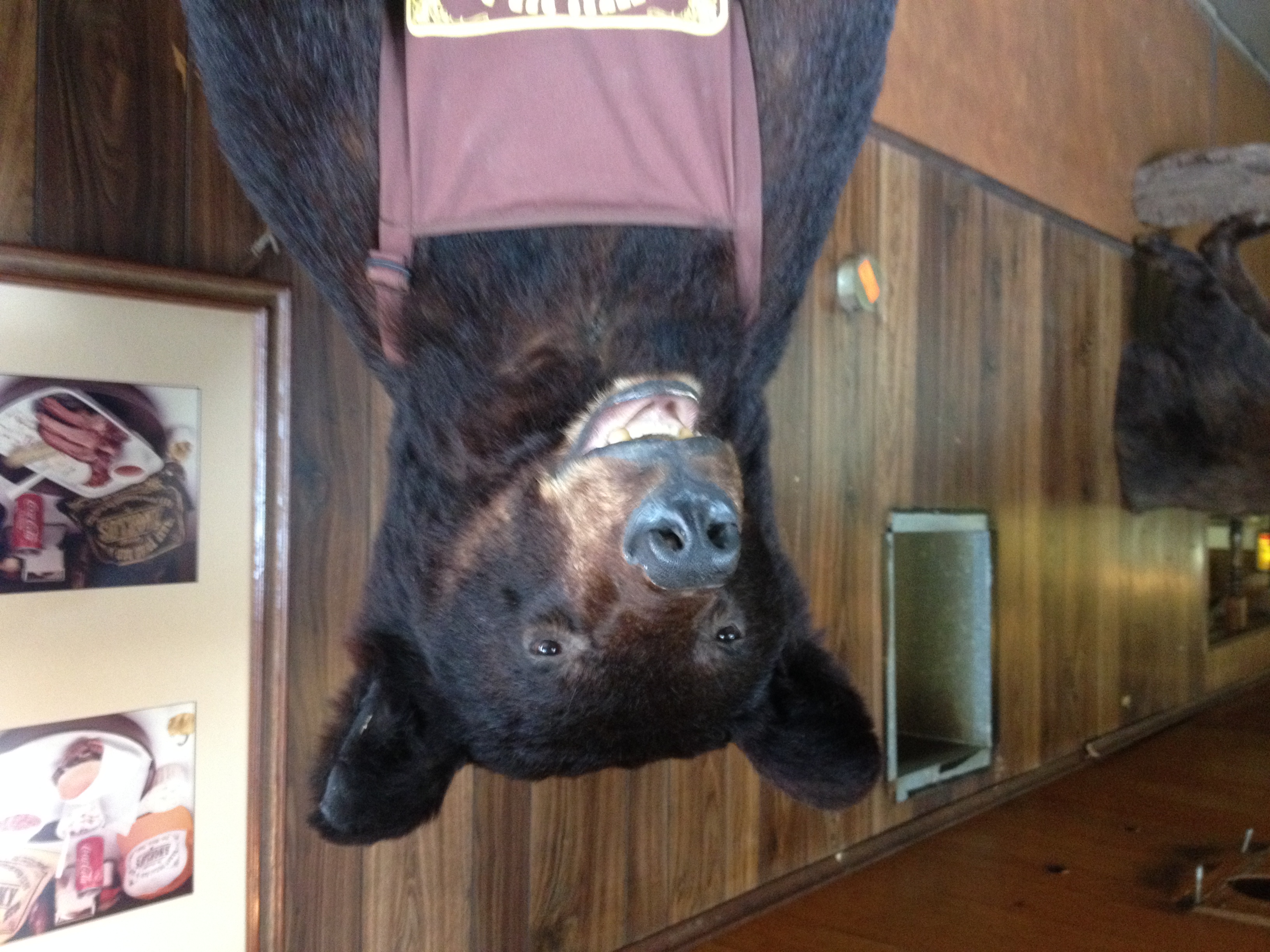It’s hard to remember the world of gin before Hendrick’s.
Think about it. The brand was introduced in 1999, which was a bold move given the spirits landscape of the time (Cosmo, anyone?), even more so given that it was developed by the master distiller of the world’s most popular whiskey brand. In a single stroke it created interest in gins that were flavored with non-traditional botanical components and at the same time engendered a strange but symbiotic relationship between whiskey and gin that persists to this day. More on that in a moment.
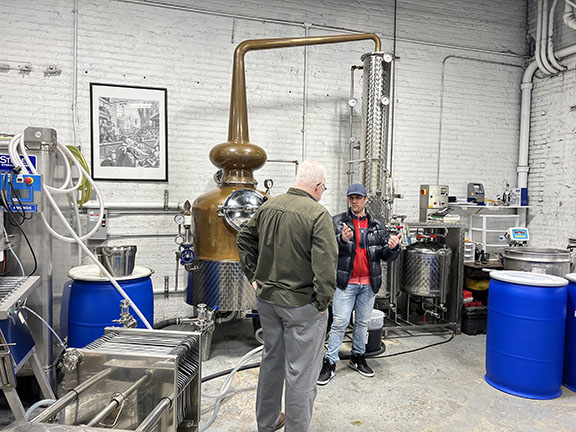 The introduction of Hendrick’s—so comparatively recent, particularly in relation to something like Elmer T. Lee’s Blanton’s Bourbon Gambit of 1985—now feels not just inevitable, but also somehow timeless, as if the sun had never risen on a world where people had to be instructed on the pronunciation of “tanker-ray,” never a time when the enjoyment of gin in these United States had shrunk to the fusty Updik-ean corners of bridge party New England
The introduction of Hendrick’s—so comparatively recent, particularly in relation to something like Elmer T. Lee’s Blanton’s Bourbon Gambit of 1985—now feels not just inevitable, but also somehow timeless, as if the sun had never risen on a world where people had to be instructed on the pronunciation of “tanker-ray,” never a time when the enjoyment of gin in these United States had shrunk to the fusty Updik-ean corners of bridge party New England
It’s harder still to imagine this time because there is so much gin available today. We’ve gone from a world dominated by the basic London Dry Style gins, to one in which Hendrick’s barely still fits into the category it created—the so-called International Style gins.
In between these moments has flooded a rush of change. To further engage the subject, once could do worse than spend an afternoon at Greenhook Ginsmiths distilling in Greenpoint, Brooklyn. There, presiding over the industrial tangle of a busy craft distilling operation is Steven DeAngelo, a one-time Wall Street trader who cleaned out his trading desk to pursue a dream of making gin.
As strange as it might sound, what makes Greenhook relatively unique among American distilling newcomers is that Steven set out to make gin, and gin alone. That they also produce some very attractive adjuncts—a ready-to-drink, eminently portable 6oz gin and tonic, made with their own tonic water, a red bitter that evokes the Campari of the seventies—has the feel of an organic evolution from the original project.
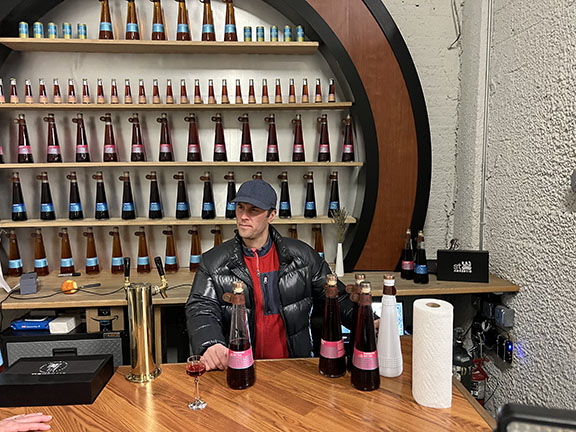 That project—and the roots of this current Golden Age of gins, take us back, in New York City at least, to 2008.
That project—and the roots of this current Golden Age of gins, take us back, in New York City at least, to 2008.
In America in particular, the story of the current era begins in the cocktail renaissance and the subsequent birth of the Craft Spirits movement. Critically in New York, the Farm Distilling Act became law in 2007, encouraging the growth of small distillers by significantly lowering the cost of a distilling license as long as the applicant produced distillate from locally grown grains and fruits.
What followed was an energetic interest and investment of brain capital by bartenders, booze enthusiasts, and entrepreneurs alike who were eager to produce spirits or styles of spirits that were no longer available, or simply do a better job of producing ones that were already made. This wave found its reef early: Whiskey stocks require time to age—three-to-six years at a minimum—and while the barrels are working their quiet magic, they’re not generating any revenue.
Meanwhile, clear spirits like vodka and gin are ready yesterday, particularly if you’re not trying too hard. They don’t require an investment in barrels. And they dovetail relatively neatly into the zeitgeist of the craft spirits movement, or at least gin does. Most importantly, they potentially offer a quick reprieve for a fledging enterprise starved for cash flow. The result being that--ironically or no--the current popularity of gin, or certainly its profusion, is directly tied to the boom in Craft Distilled-whiskey in the United States. The Hendrick’s-Glenfiddich connection comes full circle.
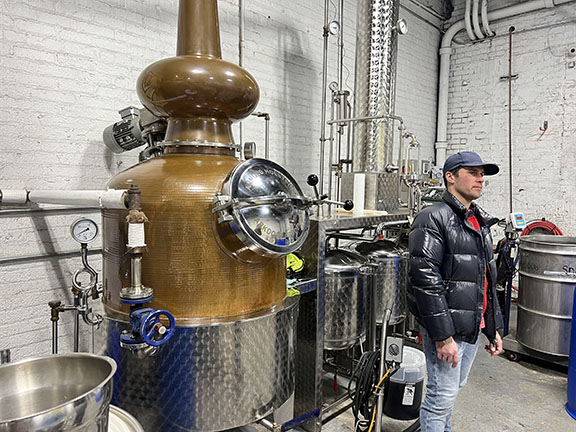 Consumers today find themselves struggling to stay afloat in this Hogarthian flood, pressed on all sides by attractively presented bottles with all the Craft Spirits trimmings—jokey labels, apothecary flourishes, endless, overwrought allusions to Prohibition. Simply put, there’s a ton of new gin out there, not all of it good
Consumers today find themselves struggling to stay afloat in this Hogarthian flood, pressed on all sides by attractively presented bottles with all the Craft Spirits trimmings—jokey labels, apothecary flourishes, endless, overwrought allusions to Prohibition. Simply put, there’s a ton of new gin out there, not all of it good
The challenge for the gin lover is to find the true craftspeople of the gin world, to separate them from the herd. In that light, Greenhook and Steven DeAngelo almost belong in their own category, that of gin made not out of necessity but by design.
Michael Longshore: Let’s go over how all this got started. I gather from our conversation walking through the distillery that you’ve got some pretty serious technical expertise. Was it always that way? Did you have a degree in chemical engineering?
 Steven DeAngelo: No it wasn’t. I was good in math and science in high school, but that’s about it. Before this I was working a finance job on Wall Street as a broker. Not only did I not have any production expertise as it relates to beverages and distilled spirits--no real world—even though I was studying this stuff before I started the business, learning about distilling—you still need that real world application to operate the equipment, doing all that stuff. It takes a lot of time. We’ve been at it now for a while. We’ve been on the market for ten years and it was a very big learning curve and we continue to learn stuff every day.
Steven DeAngelo: No it wasn’t. I was good in math and science in high school, but that’s about it. Before this I was working a finance job on Wall Street as a broker. Not only did I not have any production expertise as it relates to beverages and distilled spirits--no real world—even though I was studying this stuff before I started the business, learning about distilling—you still need that real world application to operate the equipment, doing all that stuff. It takes a lot of time. We’ve been at it now for a while. We’ve been on the market for ten years and it was a very big learning curve and we continue to learn stuff every day.
Did you start out as a home-brewer? Or …
No.
So all of a sudden one day you had the moment when you decided, I’m going to go into …
Yeah it was actually in the late 2000s, it was right after when the economy collapsed. I had started working right out of college and it was great, it was a great career, a lot of money for a kid in his twenties.
And then when the financial crisis hit that industry changed overnight. Particularly what I did, the middleman side of things, a lot of regulation came in, and a lot of those jobs became obsolete. Because we were voice brokers and a lot of that stuff went on the screen. So I was in my late twenties and I had to figure out a completely different path in life. I could have stayed in finance, but I just didn’t like it anymore. So I was working on a couple of different plans.
I had always been a big gin drinker. So the idea of building a gin distillery and creating a brand was something I went all in on. I didn’t realize at the time that they’re actually two very different businesses, believe it or not. There’s the distilling side, where you’re really running a factory, a manufacturing factory. Running a gin brand is very much a sales and marketing activity. The two different businesses don’t work in as much harmony as you might think.
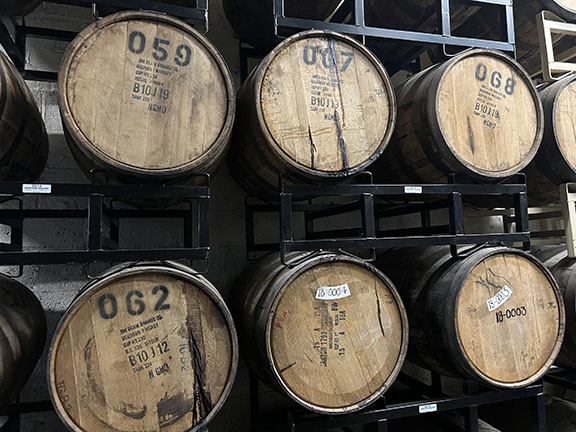 What were the early days like? How many test batches did you do before you got to the point where you felt like, “okay, we have product”?
What were the early days like? How many test batches did you do before you got to the point where you felt like, “okay, we have product”?
We actually started working on the recipe before we opened the distillery. It took about two years. You have to have a lease in place—a physical location—before you can even apply for a license with the Federal government. So during that time, when we were waiting to get licensing, we wanted to be able to open up with a product that was ready to go to market. We worked on the recipe with a distillery that was open Upstate at the time. I don’t remember exactly how many trial runs we did, but it was a lot. It took about a year to develop the recipe.
One of the things that’s tricky about gin that people don’t realize—they think that just because it’s a clear spirit you can release it really quick, which you can, it’s just not necessarily going to taste very good. When you’re dealing with herbs and spices, it’s not really about what you use, it’s about the proportions, the ratios, the amounts. It’s tricky because different herbs have very different potencies from one another. Juniper berries, say, versus something like clove, it’s night and day. Clove is super intense, super potent. Even a miniscule amount can be overbearing in a spirit. Then, once you have a recipe, you have to scale up.
Did you have a particular gin or gin style in mind when you were getting started, a particular gin that spoke to you, that you wanted to try to emulate?
I was always a London Dry gin drinker—I really like Tanqueray. But I didn’t want to release a London Dry gin, because the world didn’t need another London Dry gin. At that time—because we were pretty early on in the Craft Distilling revolution, we were definitely one of the early ones--there were some gins coming out in America, particularly on the west coast, and their selling point was that they were “juniper light.” So juniper light that, as a gin drinker, you wouldn’t recognize them as a gin, and they started calling this style the “new western style” of gin.
I didn’t want to be in that camp at all, because I thought that, in order for a gin to be a gin, it needs to have juniper. That’s where the word comes from, gin. So I wanted to make a gin that had a big, recognizable juniper backbone, but not necessarily a London Dry gin. There are plenty of those on the market. I wanted to create a juniper focused gin that had a well-rounded supporting cast.
What led you to decide to vacuum distill? Is there someone else in the industry who's doing it? What drew you to the idea, and what were the early challenges?
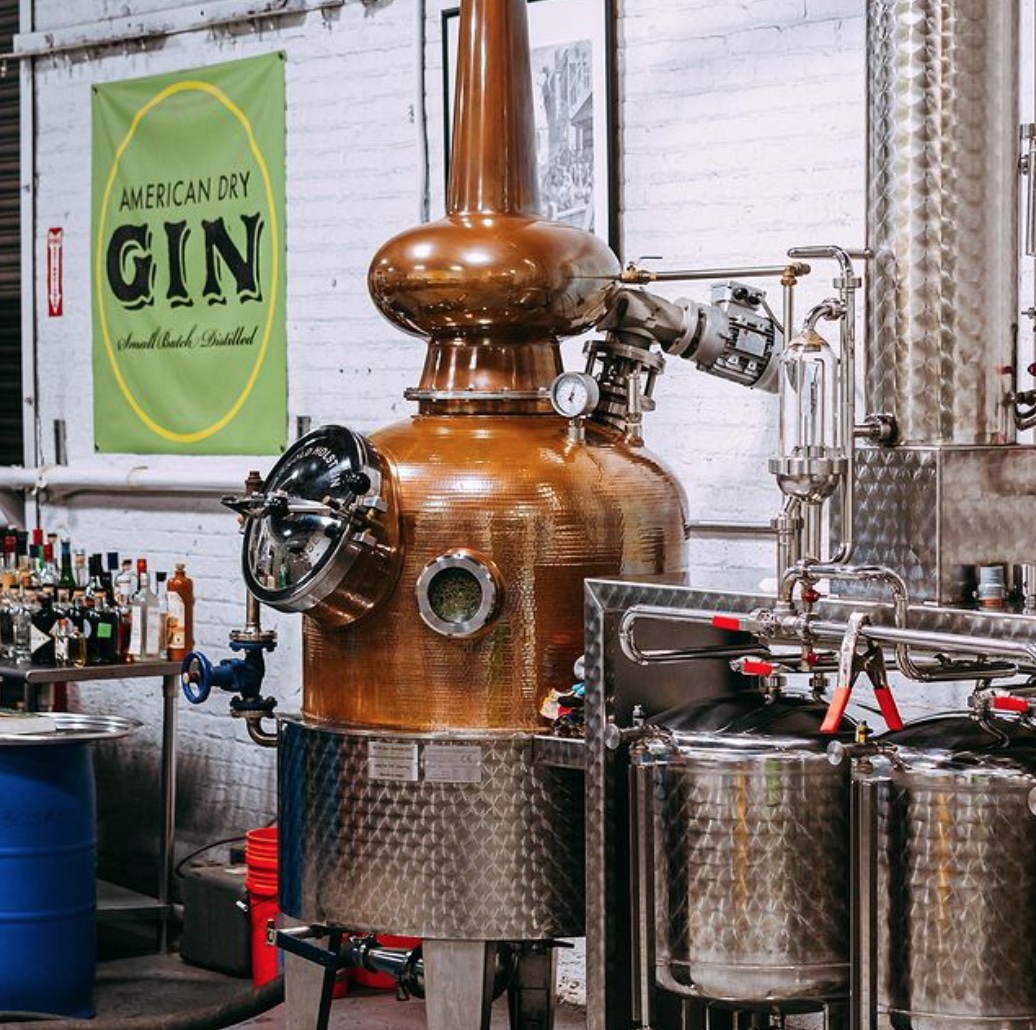 When I was studying distillation, a lot of the books cover all types of distillation. Some of the greatest books on the subject are written in the sixteen- and seventeen hundreds. One of the books I was reading covered perfume distillation in France in the late 1800s. I noticed there was a lot of crossover between the way perfumes are being distilled—because you’re distilling botanicals, in old school perfume distillation—and the way gin should be distilled.
When I was studying distillation, a lot of the books cover all types of distillation. Some of the greatest books on the subject are written in the sixteen- and seventeen hundreds. One of the books I was reading covered perfume distillation in France in the late 1800s. I noticed there was a lot of crossover between the way perfumes are being distilled—because you’re distilling botanicals, in old school perfume distillation—and the way gin should be distilled.
It was interesting to read that they used vacuum distillation to improve the yields for some of the more delicate botanicals they were using, because it was very inefficient, very expensive process—say if you’re distilling jasmine flowers, for example. It allowed distillers to capture the essence of the botanical as close to its uncooked state as possible, as opposed to exposing the botanical to the heat of traditional steam distilling. The vacuum distillation idea was kind of a light bulb moment, when I thought it would be a way to make an interesting, and unique, and vibrant aromatic style of gin.
How do you feel now—being as honest as you possibly can—how does it feel being one of the pioneers, given the current saturation of the market? How have you reacted as an entrepreneur, a businessperson?
Our biggest challenge as a business has been the category, the way the gin category has been saturated with a lot of sub-par product. And that creates a lot of consumer confusion, consumer resentment, and they fly back to the big brands, because they trust them. In America, gin doesn’t have the same pull-through as in Europe. In Europe, the category is even more saturated, but, I believe it’s the biggest distilled spirits category, as far as consumption. In America, it’s only like four percent, so it remains a very small category.
So unfortunately gin looks like a little bit like the flavored vodka category of the mid-2000s, but without the same pull-through. I would have thought by now there would have been a shake-out. Luckily for us, we were able to establish ourselves as one of the top American craft brands, as far as sales, in the metro New York market, which is probably one of the most difficult markets in the U.S. So we’ve at least planted a flag, and I believe that in time Greenhook will have its spot in every major market in America, and even the world.
But yes, the clutter that’s been created has been one of the biggest challenges to our business. As far as what to do to combat that? We’ve tried to be nimble. We created the gin and tonic can. We created a couple of niche products—though I’m not sure that actually decreased the clutter. I’m just trying to focus on the flagship.
If you could, please describe the process of creating the St. Agrestis red bitter--I know you run that production, but I believe you said you had a part in the creation of the recipe making as well.
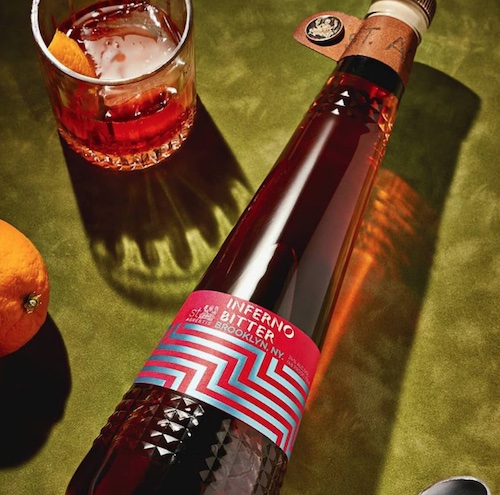 As far as the St. Agrestis Inferno Bitter is concerned, we of course were not trying to make a "knockoff" type product, but it was very important to us that we created a product that had the right amount of bitterness and flavor profile to work in a Negroni. There have been many Campari type alternatives that have come to market over the past decade or so, and where I felt they all went flat was that they didn’t work in the Negroni application due to lack of bitterness.
As far as the St. Agrestis Inferno Bitter is concerned, we of course were not trying to make a "knockoff" type product, but it was very important to us that we created a product that had the right amount of bitterness and flavor profile to work in a Negroni. There have been many Campari type alternatives that have come to market over the past decade or so, and where I felt they all went flat was that they didn’t work in the Negroni application due to lack of bitterness.
We developed our Inferno Bitter by creating a library of exotic botanical extractions and a lot of tasting and smelling and blending over a very long and arduous R&D period and it was a very difficult thing to accomplish but we were very proud with what we created, which in my opinion has the same exact bitterness units as Campari, but more natural depth of flavor.
You’re excited about RTD (“ready to drink” cocktails) product …
Our RTDs are unique in that they’re very brand focused. They highlight the flagship. We’re not looking to make canned margaritas, canned mojitos. I think that’s a bubble that’s going to burst.
So if you didn’t make gin, what would be a spirit you would make?
I particularly enjoy rum, but I think it’s a difficult category, so I don’t think I’d get into that from a business perspective.
So if you’re not drinking Greenhook, what’s your favorite gin?
I drink different gins. I’ve always liked Tanqueray—a good Tanqueray and tonic. As far as more unique gins, I like a gin that isn’t as popular now as it was ten years ago, called Old Raj. As far as some of the newer gins, I’ve got to admit—it’s a big star, but I do like it—Monkey 47. It’s not traditional, but it’s very well made.
What’s your cocktail?
Gin and tonic. All day, every day.
